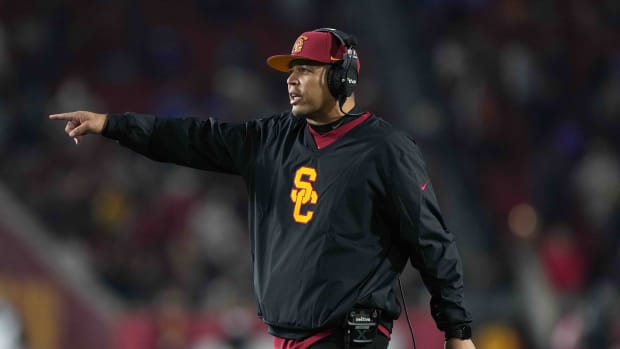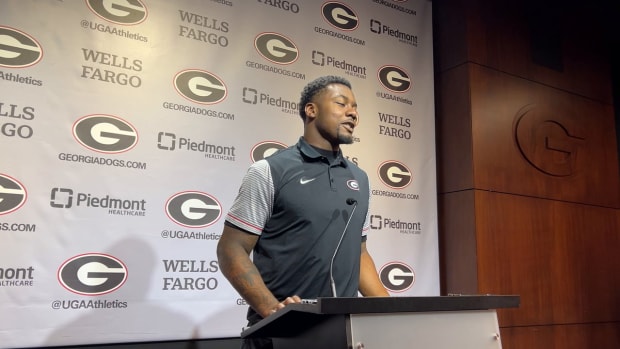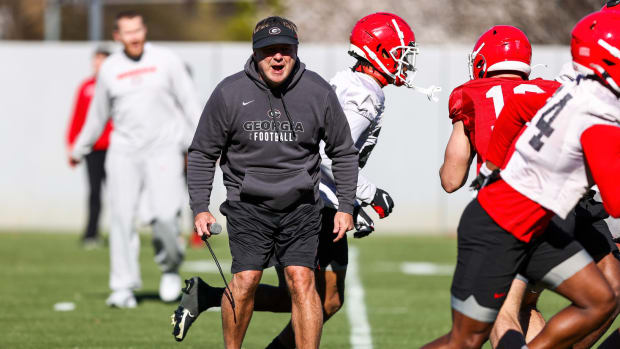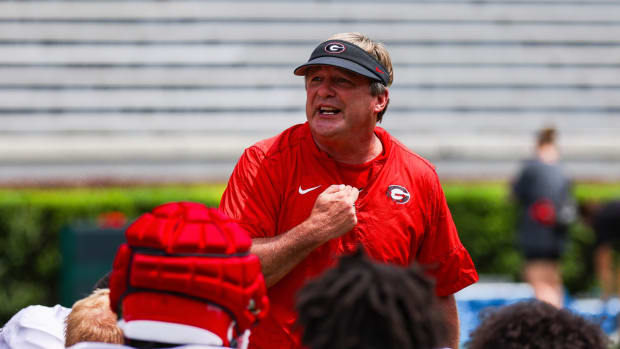Seasons Where Bulldogs Could Have Benefited From a Transfer Portal
Perhaps nothing has changed the landscape of college football more than the transfer portal.
Teams are able to avoid rebuilding years by finding skilled, experienced players in the portal. Georgia Football has done just that this offseason, rebuilding its depleted defensive backfield with Tykee Smith and Derion Kendrick, and bolstering the offense with Arik Gilbert.
The recent transfers have taken Georgia from a potentially great team with glaring weaknesses, to a team with perhaps the best roster in the nation.
It's gotten this sportswriter thinking: What seasons from Georgia's past could the team have utilized the transfer portal?
2009: Offensive overhaul
Georgia's work in the defensive backfield this offseason shows it's possible to overhaul an entire position group through the portal. The Bulldogs could have used a similar offseason back in 2009. After a disappointing 2008 season, quarterback Matthew Stafford and running back Knowshon Moreno both left school early while wide receiver Mohamed Massaquoi graduated.
To say Georgia wasn't ready to replace them in 2009 is an understatement. Joe Cox was a clear step down from Stafford, passing for around 1,000 fewer yards than his predecessor and tossing 15 interceptions. Washaun Ealey and Caleb King had moments of brilliance in Georgia's backfield, but neither were as reliable as Moreno.
The receiving corps was arguably hit the hardest. Massaquoi and A.J. Green nearly became Georgia's first 1,000-yard receiving duo in 2008. Green continued to lead Georgia's passing attack, but no one came close to replicating Massaquoi's impact. In fact, Georgia's second, third and fourth wide receivers combined couldn't equal the amount of yards Massaquoi produced in 2008.
The Bulldogs needed more than transfers to field a competent defense in 2009, so quality transfers on offense weren't going to produce a national title. But with three close losses and a pair of blowouts on its record, you can see where the transfer portal could have helped Georgia be more competitive in 2009.
2006: Quarterback
Georgia clearly wasn't ready for life without David Greene and D.J. Shockley in 2006. The two quarterbacks led the Bulldogs to two SEC Championships, three SEC East titles, and a 52-13 record in head coach Mark Richt's first five seasons.
Georgia's quarterback situation was a mess in 2006. Joe Tereshinski III inherited the starting job and he played OK, but he was injury-prone. Stafford was obviously talented, but he was raw and was a turnover machine. Cox wasn't the answer either.
The issues at quarterback were responsible for Georgia's mid-season collapse. The team nearly lost to Colorado with Stafford at quarterback. Cox led a comeback in the second half to win 14-13. He started at Ole Miss a week later, but he failed to replicate the success. Stafford regained the job and Georgia barely won 14-9.
The wheels finally fell off in Tereshinski's return against Tennessee. He turned the ball over three times, leading to three Volunteers touchdowns in the second half. Tennessee also scored a touchdown on a blocked punt following a three-and-out. Georgia lost 51-33.
The offense reached new lows a week later against Vanderbilt, needing a pick-six by Tony Taylor just to have a chance to beat the Commodores. Stafford threw a pair of interceptions in a 21-14 loss to Florida, including one at the Gators' 6-yard line. Against Kentucky, Stafford tossed three picks in a 24-20 loss to the Wildcats.
By the end of Georgia's collapse, the Bulldogs had a 6-4 record, but they recovered to upset Auburn, Georgia Tech and Virginia Tech to end the season 9-4. That late-season resurgence created even more what ifs for Georgia.
2003: Offensive line and running back
After winning the SEC Championship in 2002, Georgia lost its entire offensive line to graduation, including Jon Stinchcomb, who went on to have a fruitful career in the NFL. The Bulldogs didn't have any juniors or seniors ready to fill the voids in 2003 and instead fielded a constantly rotating cast of freshmen and sophomores.
Georgia also lost junior running back Musa Smith to the draft. Smith rushed for 1,324 yards and scored eight touchdowns to lead the Bulldogs. In his place was a stable consisting of freshmen Michael Cooper and Kregg Lumpkin, and sophomore Tyson Browning. The young trio couldn't replace Smith's production.
Fortunately, Georgia had an elite defense that year which carried the team to its second-consecutive SEC East Championship, but the team could have achieved so much more with a better offensive line and a leader in the backfield. Georgia failed to score 14 points in each of its three losses. The defense did its job in the regular season, holding LSU to 17 points and Florida to 16.




